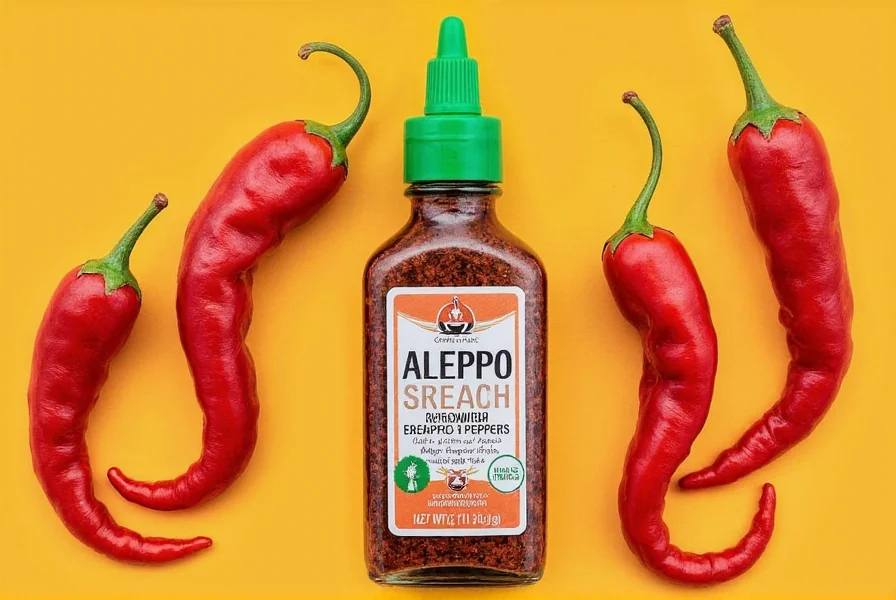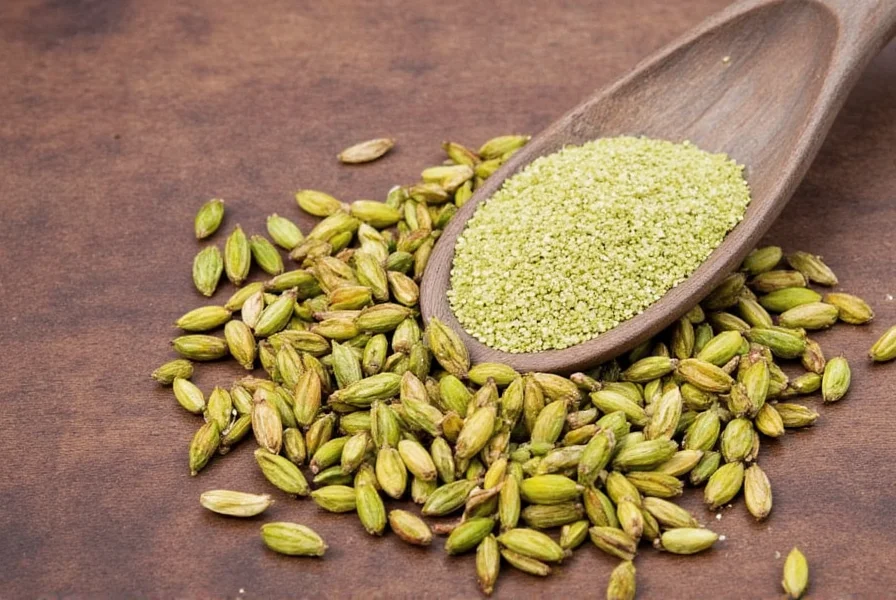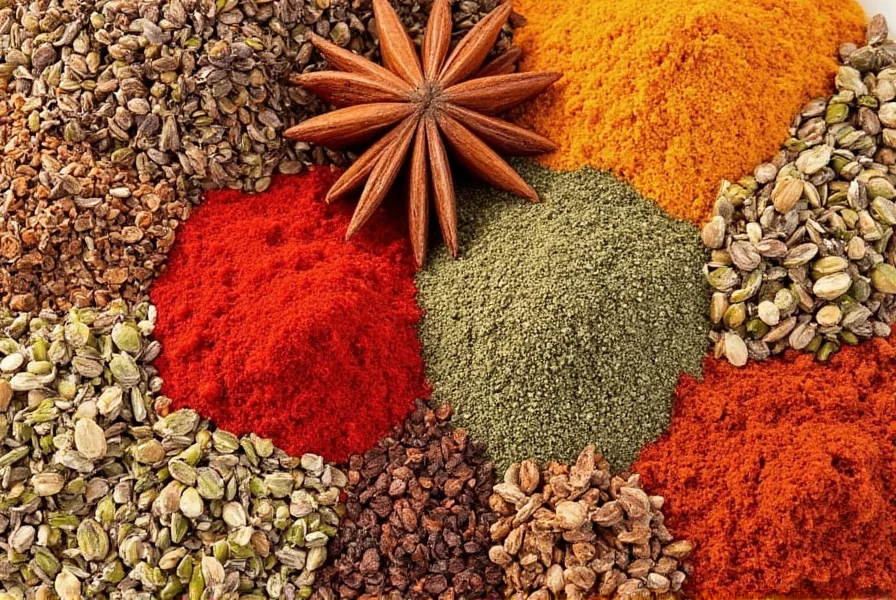Top 10 Aleppo Pepper Substitutes for Authentic Mediterranean Cooking
Looking for Aleppo pepper substitutes? Whether you're missing this key ingredient for a recipe or can't find it in stores, these 10 expert-vetted alternatives will keep your Mediterranean dishes authentic. We've compiled a detailed comparison of heat levels, flavor profiles, and best uses for each alternative.
What Makes Aleppo Pepper Unique?
- Mild Heat: Ranging between 10,000–15,000 Scoville units
- Fruity Flavor: Notes of raisin and sun-dried tomato
- Smokey Undertones: Often lightly smoked during processing
- Oily Texture: Typically sold crushed in oil for easy application

| Substitute | Heat Level | Flavor Profile | Best For |
|---|---|---|---|
| Ancho Chile Powder | Low (1,000–2,000 SHU) | Sweet, raisiny | Dry rubs, sauces, vegetarian dishes |
| Pasilla Chile Powder | Medium-low (1,000–2,500 SHU) | Berry-like, earthy | Moles, soups, stews |
| Cayenne + Smoked Paprika Blend | Medium-high (30,000–50,000 SHU) | Spicy + smoky | High-heat dishes, grilled meats |
| Ancho + Cayenne Mix | Medium (adjustable) | Balanced fruit & fire | Kebabs, dips, Middle Eastern dips |
| Marash Pepper | Medium (20,000–30,000 SHU) | Fruity, oily | Turkish-inspired cuisine, mezze platters |
| Hatch Chile Flakes | Variable (mild to hot) | Grassy, tangy | American Southwest dishes, tacos |
| Crushed Red Pepper Flakes | Medium-hot (25,000–30,000 SHU) | Sharp, spicy | Pizza, pasta, quick weeknight meals |
| Chipotle in Adobo (Diced) | Medium (5,000–10,000 SHU) | Smoky, tangy | Stews, salsas, bean dishes |
| Shishito Peppers (roasted & flaked) | Mild (100–1,000 SHU) | Grilled sweetness | Asian-Mediterranean fusion, appetizers |
| Cumin + Paprika Mix | None | Earthy, sweet-spice | Vegan dishes, mild palates, spice blends |

How to Choose the Best Aleppo Pepper Substitute for Your Dish
- Know your dish's profile: Is it dry, saucy, grilled, or pickled?
- Balance flavor and heat: Don't overdo spice if you're aiming for authenticity.
- Test small amounts: Especially when using stronger substitutes like cayenne blends.
Buying Guide: What to Look For in an Aleppo Pepper Substitute
If you're purchasing a substitute product, whether it's a powder blend or pre-mixed spice combo, here are the key features to evaluate based on culinary expert recommendations:

Quick Tips for Using Aleppo Pepper Substitutes
- Add gradually—some subs pack more punch than Aleppo.
- Toast whole spices before grinding for deeper flavor.
- Mix with olive oil or lemon juice to mimic the slick texture of authentic Aleppo pepper in oil.
When Should You Avoid a Substitute?
In cases where Aleppo pepper is a highlight ingredient—such as on za'atar blends or drizzled over hummus—it's worth sourcing it directly if possible. If not, choose a substitute that closely matches its low-to-medium heat and fruity complexity, like Marash pepper or a custom Ancho + Cayenne blend.
Expert Tips for Mastering Spices
Professional chefs emphasize that substitutions aren't just about matching heat—they're about recreating the soul of the dish. Always consider:
- Color: Some peppers add visual flair; others may mute a dish.
- Mouthfeel: Oily vs. dry textures can change how a dish feels.
- Aroma: Does the sub bring out the same warmth and fragrance?

Frequently Asked Questions About Aleppo Pepper Substitutes
What is the closest substitute for Aleppo pepper?
Marash pepper is considered the closest substitute for Aleppo pepper. Both originate from similar regions (Turkey for Marash, Syria for Aleppo), share a comparable heat level (medium), and have that distinctive fruity, slightly raisin-like flavor profile. Marash pepper also typically has the same oily texture that makes Aleppo pepper so special when used as a finishing spice.
Can I use regular red pepper flakes instead of Aleppo pepper?
Yes, but with caution. Regular red pepper flakes (usually made from cayenne) are significantly hotter than Aleppo pepper (25,000-30,000 SHU compared to Aleppo's 10,000-15,000 SHU). If using as a substitute, use about half the amount called for in your recipe. For better results, mix the red pepper flakes with a bit of smoked paprika and olive oil to approximate Aleppo's flavor profile and texture.
How does Aleppo pepper compare to paprika?
Aleppo pepper has a more complex flavor profile than standard paprika. While both offer mild heat, Aleppo pepper brings fruity notes (like raisins and sun-dried tomatoes) and subtle smokiness. Sweet paprika lacks heat entirely, while smoked paprika offers smokiness but no fruitiness. For a closer approximation, combine sweet paprika with a small amount of cayenne and perhaps a touch of dried tomato powder.
What's the difference between Aleppo pepper and Marash pepper?
Both peppers come from similar regions and share many characteristics, but there are subtle differences. Aleppo pepper (from Syria) tends to be slightly milder (10,000-15,000 SHU) with more pronounced fruity notes, while Marash pepper (from Turkey) is a bit hotter (20,000-30,000 SHU) with a more earthy flavor profile. Visually, Aleppo pepper flakes are typically larger and more irregular, while Marash pepper is often finer. Despite these differences, they can be used interchangeably in most recipes.
Can I make my own Aleppo pepper substitute at home?
Absolutely. The simplest homemade substitute is a 3:1 blend of sweet paprika and cayenne pepper. For a more authentic version, try mixing 2 parts ancho chile powder, 1 part smoked paprika, and a small pinch of cayenne. To mimic the oil-slick texture that makes Aleppo pepper special, store your substitute in olive oil with a few garlic cloves and dried oregano for added complexity.
Why is Aleppo pepper so hard to find in some regions?
Aleppo pepper has become difficult to source in some regions due to geopolitical issues affecting its primary growing regions in Syria. Trade restrictions, import regulations, and supply chain disruptions have all contributed to its scarcity. Additionally, as its popularity has grown globally, demand sometimes outstrips supply. Many products labeled as "Aleppo pepper" are actually from Turkey or other neighboring regions but are processed in the traditional Aleppo style.
Conclusion: Spice It Up With the Right Aleppo Pepper Substitute
Whether you're crafting a traditional Levantine mezze or experimenting with global flavors, finding the right Aleppo pepper substitute ensures your dish doesn't lose its soul. From pantry staples like paprika to specialty imports like Marash chili, there's a perfect match waiting for every recipe. So next time your go-to Aleppo jar runs dry, don't panic—just reach for one of these flavorful stand-ins!










 浙公网安备
33010002000092号
浙公网安备
33010002000092号 浙B2-20120091-4
浙B2-20120091-4